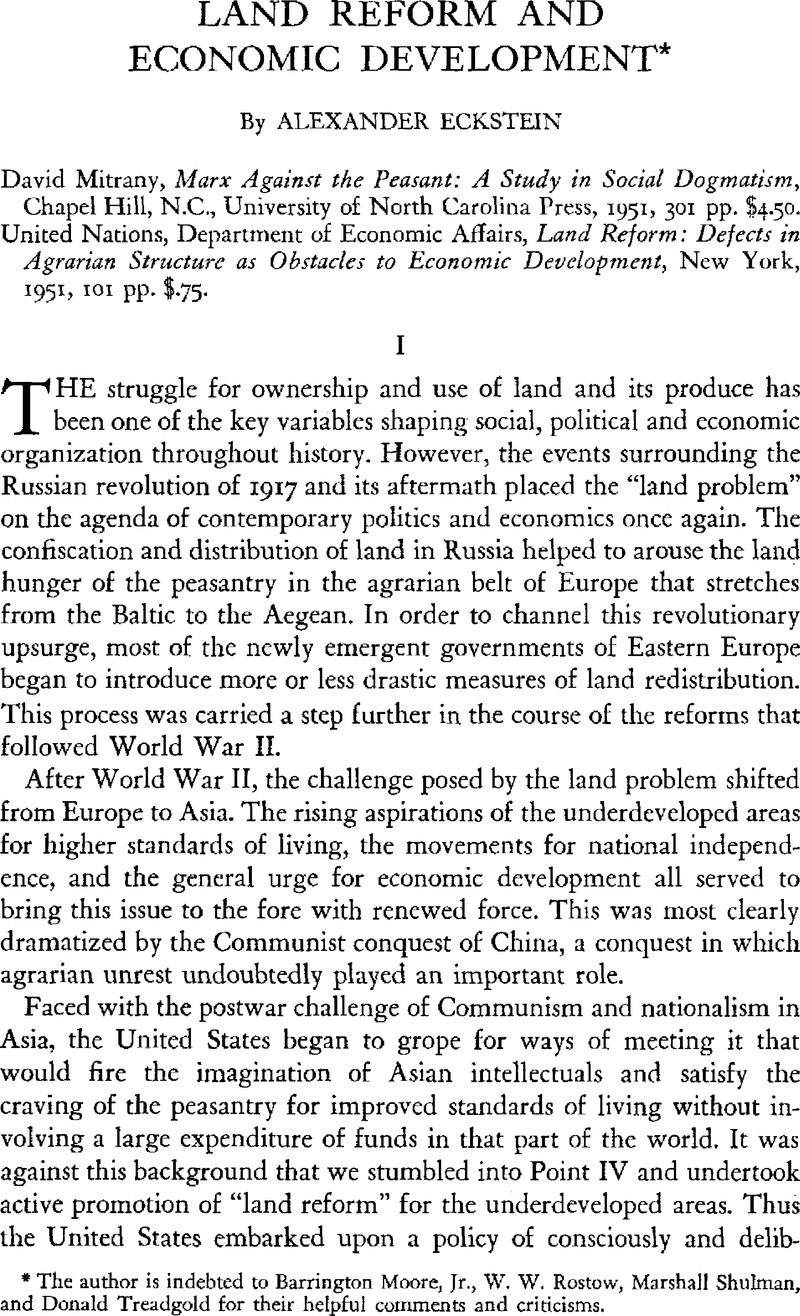Published online by Cambridge University Press: 18 July 2011

1 Address before die General Assembly on September 20, 1950, in Department of State Bulletin, XXIII, No. 587 (October 2, 1950).
2 See U.N. Resolution on Land Reform adopted on November 20, 1950, U.N. doc. a/154 R., in ibid.; also die statement by Isador Lubin in the ECOSOC session at Geneva On September 3, 1951, and his statement in Committee II of the General Assembly on December 2 and 5, 1952.
3 Gilmarstin, William W. and Ladejinsky, W. I., “The Promise of Agrarian Reform in Japan,” Foreign Affairs, XXVI, No. 2 (January 1948), p. 314.Google Scholar
4 Mitrany indicates that this question is the one posed by Populists. He does not explicitly identify himself with this formulation, but, as I will try to show, it partially reflects his own predilections.
5 Institutul Central de Statistica, Annuarul Statistic al Romaniei, 1939 si 1940, pp. 478–85Google Scholar; L'Office Central Royal Hongrois de Statistique, Recensetnent General de la Population, 1930, II, p. 28Google Scholar; Lajos, Thirring, “Occupational Distribution of Our People” (in Hungarian), Magyar Statisztikai Szemle, XXV (January-February 1947), Table III11, p. 7.Google Scholar
6 See Gerschenkron, Alexander, “The Problem of Economic Development in Russian ntellectual History of the Nineteenth Century,” in Continuity and Change in Russian md Soviet Thought, ed. by Simmons, E. J. (to be published by Harvard University Press).Google Scholar
7 Mitrany admits this toward the end of his book, when he says on p. 206: “It is overooked that in Eastern Europe there was a strong Populist, that is, agrarian-peasant evolutionary movement before the new ‘scientific’ Socialism came upon the scene.” This is in direct contradiction to the thesis which runs throughout Chapters 2, 3, and. For example, in Chapter 4 (p. 25), he writes: “The revolt against Marxism followed xacdy this variation in economic structure. It traveled eastwards in ever-wideningddies until it struck the shores of Russia; there it encountered intense local currentsnd the returning tide came back transformed out of all recognition as Populism, and i that guise overflowed into the neighboring peasant countries.”
8 See SirMaynard, John, Russia in Flux, New York, 1951, pp. 118–20.Google Scholar
9 See Eckstein, Alexander, “Land Reform and the Transformation of Agriculture in Hungary,” Journal of Farm Economics, XXXI (August 1949), pp. 456–68.CrossRefGoogle Scholar
10 The brief but lucid and well-reasoned treatment by Philip Raup represents one of the few exceptions; see his paper on “Agricultural Taxation and Land Tenure Reform in Underdeveloped Countries,” in Agricultural Taxation and Economic Development, ed. by H. P. Wald in association with Froomkin, J. N., Cambridge, Mass., 1954, pp. 261–64.Google Scholar
11 This, of course, would not be true in respect to the institutional and political arrangements through which the transfer is accomplished.